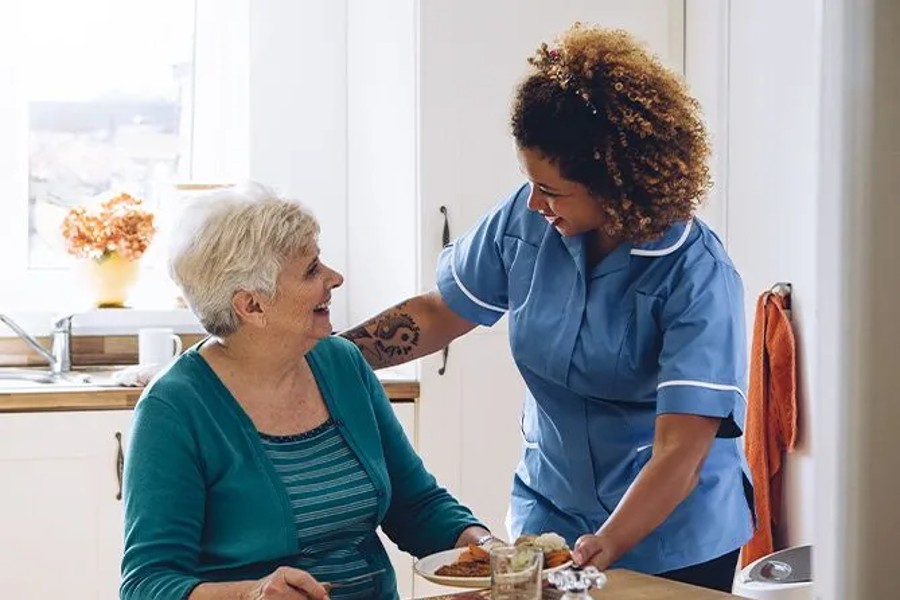
The vibrant neighborhood of Harlem has a surprising history with the world of eye health.
Dr. Patricia Era Bath, the inventor of the revolutionary Lasik eye surgery procedure, was born and raised in Harlem, and her presence in the field has been an instrumental stepping stone for women and African Americans in several areas.
She also noticed that eye care practices were uneven when it came to Black and poorer patients, who often had a higher incidence of blindness and weren’t able to access the procedures they needed. Even in the present day, access to vision care is still a struggle for the Black community and other people of color (POC). With Harlem being a predominantly African American neighborhood, many may be struggling with their eye health. They may not have access to or be aware of treatment options that can improve their vision. Much must be done to amend the barriers marginalized communities face, but fortunately, many more strides are being taken to give Harlem residents and other neighborhoods of color eye care opportunities.
Vision care disparities
Black people have a higher risk of developing certain eye conditions. Nearly 190,000 Black or African American people have some form of vision impairment. Diabetic retinopathy, glaucoma, and cataracts are some of the diseases that affect Black and African American populations disproportionately. These communities also have some of the highest rates of vision loss and blindness caused by eye disease. If they cannot be treated earlier, preventing vision loss becomes more difficult. Such vision issues are rooted not only in overall health but also in a lack of access to eye care. It’s not only Black communities who face this struggle; not being able to access vision care services contributes to racial, ethnic, and socioeconomic disparities in visual function among Black, Hispanic, and poorer people. Harlem has a high population of African American and Hispanic people, meaning that eye health disparities are a common challenge.
There can be multiple barriers to eye care access. Many Harlem residents face lower incomes and limited access to health insurance, making regular eye exams and purchasing glasses financially burdensome. Language barriers and a lack of awareness about the importance of eye health can prevent some residents from seeking vision care. Few minority healthcare providers can lead to cultural insensitivity and a feeling of disconnect between patients and doctors. These are systemic issues that require intensive action and reform, but there are fortunately more opportunities that are helping bridge the gap for Harlem residents and other communities of color to receive the help they need.
Eye care options
Access to vision correction is one of the easiest ways Black and POC communities in Harlem can address vision concerns like refractive issues. Being able to obtain high-quality glasses can also make a difference, as better craftsmanship and materials can lead to better durability to prevent frequent repairs or replacements that can be costly. A stylish pair like the Ray-Ban Wayfarer Ease Optics or the Ralph by Ralph Lauren RA7158U model can also help boost self-esteem and confidence. These frames can be pricey, but vision insurance, a Flexible Spending Account (FSA), or a Health Savings Account (HSA) can cover or lower the cost. Online deals and promos can also help decrease prices. Other than eyewear retailers, vision access programs may provide free or low-cost glasses for eligible populations, such as children or seniors.
Eye exams are also crucial in vision care, as regular check-ups can help detect eye conditions early on for more effective treatment. However, many in Harlem may not know where to get an eye test done or may not have the funds, preventing access to eye exams or follow-up screenings. To address these issues, programs, and strategies are being developed to provide communities like Harlem with eye exam services. One such example is the Screening and Intervention for Glaucoma and Eye Health through Telemedicine (SIGHT) studies, which aim to improve eye disease detection and follow-up eye care in vulnerable populations, such as those living in Harlem. Trained community health workers conducted free vision and eye health screenings, and patient navigators scheduled on-site eye exams and arranged appointments to improve adherence to follow-up eye care. People can get sufficient care and spot potential eye diseases by maintaining regularity with eye health screenings.
Achieving equal access to vision care in Harlem and beyond requires a collaborative effort. Healthcare providers, policymakers, and community organizations must work together to create a future where everyone can experience the world with a clear vision.
Become a Harlem Insider!
By submitting this form, you are consenting to receive marketing emails from: . You can revoke your consent to receive emails at any time by using the SafeUnsubscribe® link, found at the bottom of every email. Emails are serviced by Constant Contact








